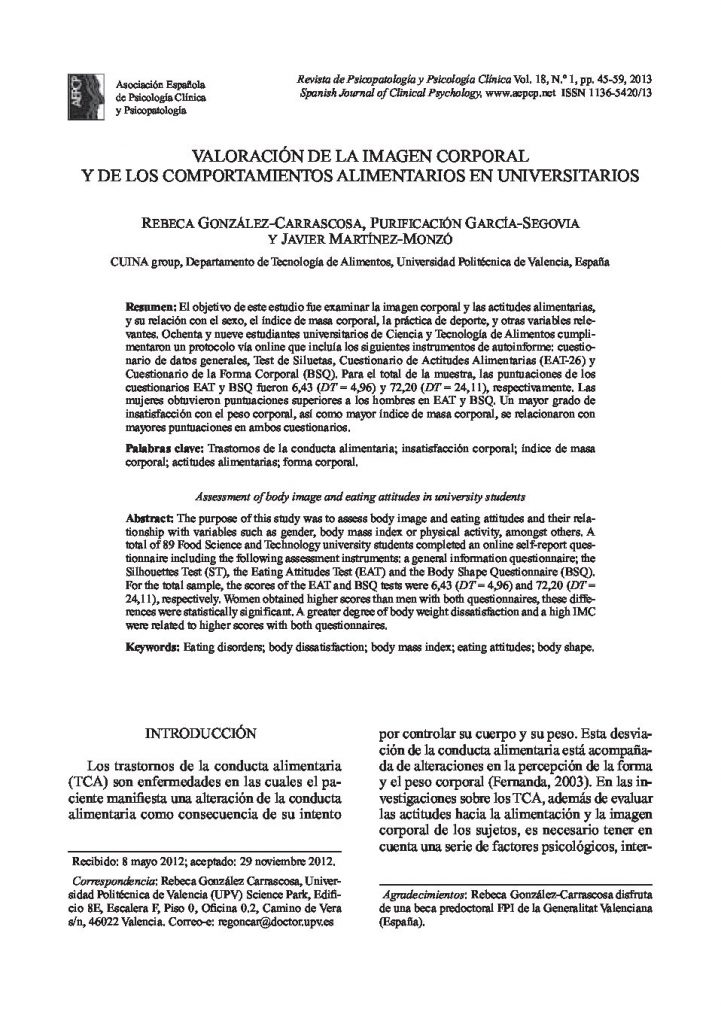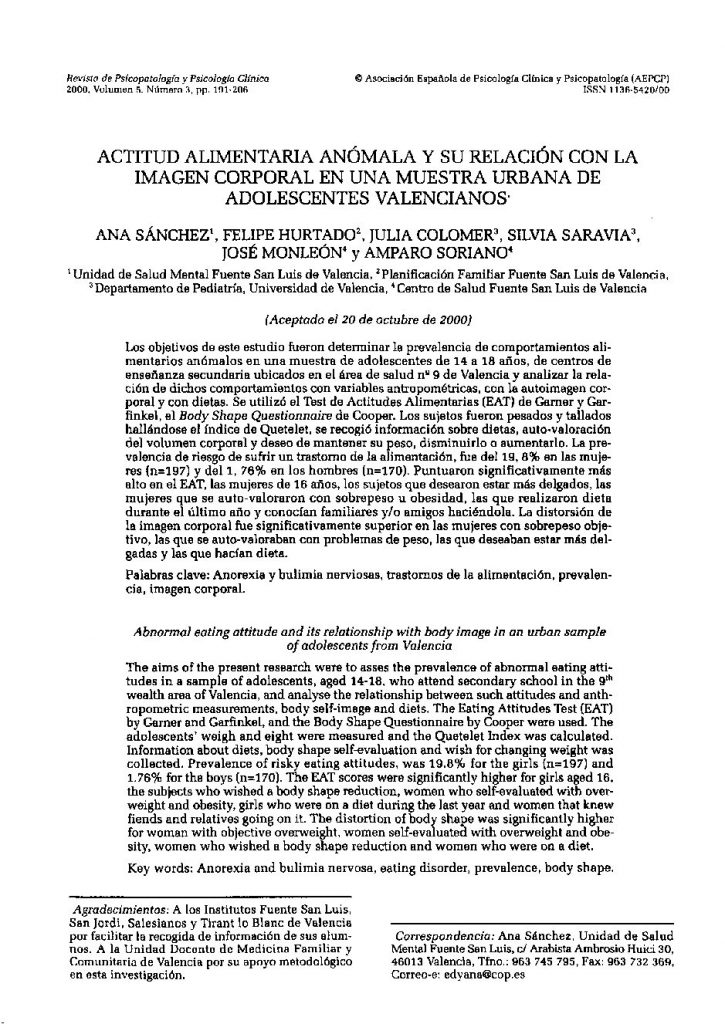Valoración de la imagen corporal y de los comportamientos alimentarios en universitarios.

- Construcción y validación preliminar de la Escala Multidimensional de Sensibilidad al Asco (EMA).
- Dimensiones de sensibilidad al asco y predicción diferencial de los síntomas fóbicos.
- Conformidad con roles femeninos y conductas alimentarias inadecuadas en estudiantes de danza.
- Estudio de la validez de la versión española del Cuestionario de Estilo Atribucional ante Situaciones Negativas.
- Valoración de la imagen corporal y de los comportamientos alimentarios en universitarios.
- La falta de empatía: ¿Un síntoma específico de la esquizofrenia?.
- Subescala OCS-CBCL de Nelson para la evaluación del trastorno obsesivo-compulsivo infanto-juvenil: Análisis de validez en una muestra española.
The purpose of this study was to assess body image and eating attitudes and their relationship with variables such as gender, body mass index or physical activity, amongst others. A total of 89 Food Science and Technology university students completed an online self-report questionnaire including the following assessment instruments: a general information questionnaire; the Silhouettes Test (ST), the Eating Attitudes Test (EAT) and the Body Shape Questionnaire (BSQ). For the total sample, the scores of the EAT and BSQ tests were 6,43 (DT = 4,96) and 72,20 (DT = 24,11), respectively. Women obtained higher scores than men with both questionnaires, these differences were statistically significant. A greater degree of body weight dissatisfaction and a high IMC were related to higher scores with both questionnaires.
El objetivo de este estudio fue examinar la imagen corporal y las actitudes alimentarias, y su relación con el sexo, el índice de masa corporal, la práctica de deporte, y otras variables relevantes. Ochenta y nueve estudiantes de Ciencia y Tecnología de Alimentos cumplimentaron un protocolo vía online que incluía los siguientes instrumentos de autoinforme: cuestionario de datos generales, Test de siluetas (TS), Cuestionario de Actitudes Alimentarias (EAT-26) y Cuestionario de la Forma Corporal (BSQ). Para el total de la muestra, las puntuaciones de los cuestionarios EAT y BSQ fueron 6,43 (DT = 4,96) y 72,20 (DT = 24,11), respectivamente. Las mujeres obtuvieron puntuaciones superiores a los hombres en EAT y BSQ. Un mayor grado de insatisfacción con el peso corporal, así como mayor índice de masa corporal, se relacionaron con mayores puntuaciones en ambos cuestionarios.




